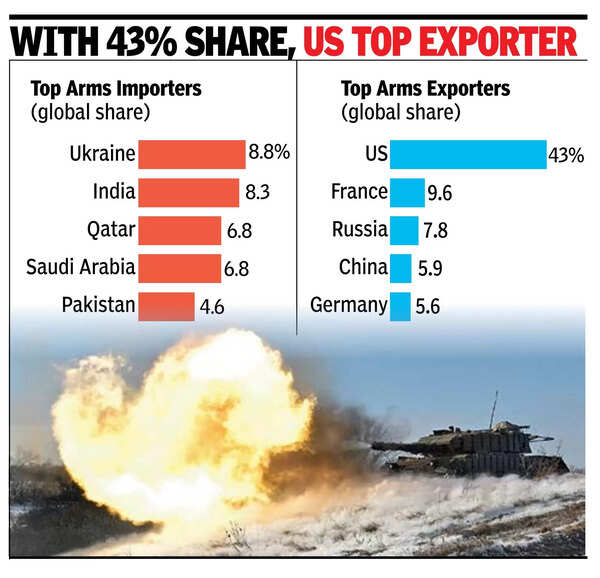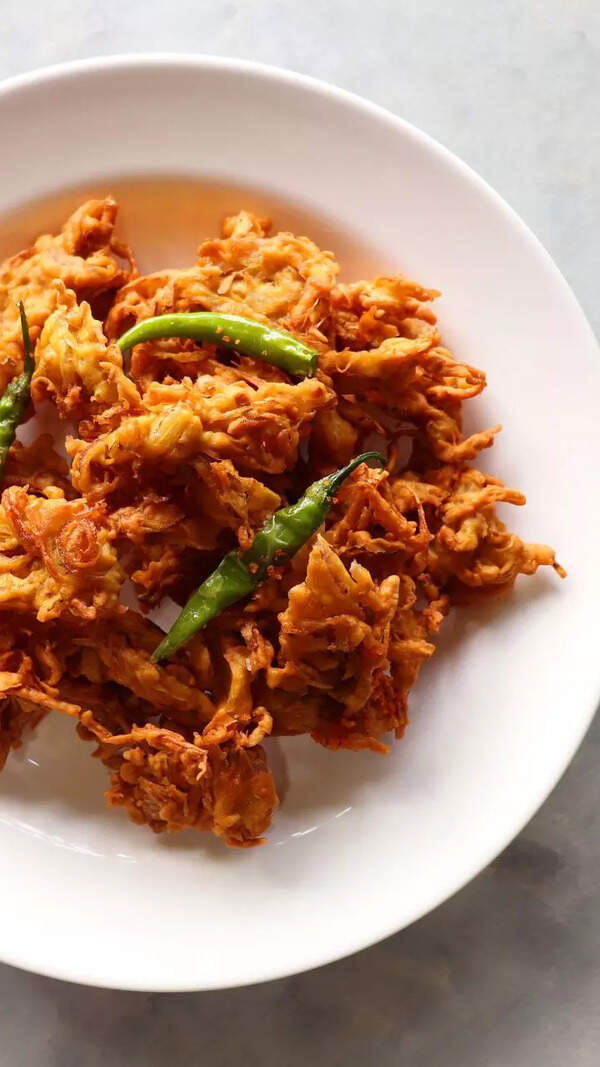- News
- India News
- Dogs of war: Russian rumble makes Ukraine top arms buyer
Trending
Dogs of war: Russian rumble makes Ukraine top arms buyer
Ukraine surpassed India as the world's top arms importer in 2020-24, with its imports rising significantly due to its war with Russia. India's arms imports, driven by tensions with China and Pakistan, accounted for 8.3% of global imports. India's imports from Russia decreased, while imports from France and Israel increased.
NEW DELHI: Ukraine has displaced India as the world’s largest arms importer in the 2020-24 timeframe, with its imports skyrocketing by nearly 100 times compared to 2015-19 due to its ongoing debilitating war with Russia.
India notched up 8.3% of the global arms imports in 2020-24, driven largely by heightened tensions with China and Pakistan, while Ukraine stood at 8.8%, as per as per latest data on international arms transfers released by the Stockholm International Peace Research Institute (SIPRI) on Monday.
Overall, European arms imports grew by 155%, fueled by fears of Russia’s expansionism after invading Ukraine in Feb 2022 and the prevailing uncertainty over the future of US foreign policy under the new Trump administration.

With 43% share, UP top exporter
There was a small silver lining for India despite its strategically-vulnerable position of being a top arms importer, with SIPRI noting that its imports decreased by 9.3% between 2015-19 and 2020-24, partly due to New Delhi ’s increasing ability to design and produce its own weapons.
The figures, however, do not account for deals where deliveries have not yet begun. This includes, for instance, the mega $3.3 billion contract with the US govt for 31 weaponized MQ-9B `Predator’ drones, along with another $520 million contract with manufacturer General Atomics to set up an MRO facility in India, inked last Oct.
Russia remains India’s main weapons supplier, accounting for 36% of its arms imports. Russia’s share, however, has steadily declined from 72% in 2010-14 and 55% in 2015-19 because India has increasingly turned to the US, France and Israel. Russian arms exports, in fact, have fallen sharply by 64% in the latest five-year period, with China too relying mainly on its own military-industrial complex.
Despite recent declarations from India and Russia that their defence ties remain as robust as ever, SIPR said, “The shift is visible in India’s new and planned orders for major arms, most of which will come from Western suppliers.”
France accounts for 33% of India’s imports, with Israel placed third with 13%. India, of course, is getting set to ink two mega deals with France for direct acquisition of 26 Rafale-Marine fighters as well as the construction of three additional Scorpene submarines by Mazagon Docks, collectively worth around Euro 10.6 billion (almost Rs 1 lakh crore). India, incidentally, is the biggest arms customer of France, Russia and Israel.
The fourth largest military spender after the US, China and Russia, India needs to single-mindedly pursue cutting-edge defence R&D, expand its defence-industrial base and streamline procurement procedures to ensure it gets the biggest bang for its buck.
While DRDO, defence PSUs, shipyards and ordnance factories should become much more dynamic instead of wallowing in time and cost overruns, the domestic private sector and foreign armament majors must be further encouraged to enter defence production here in a much bigger way.
Not a single “Make in India” project, for instance, has taken off till now under the much-touted strategic partnership model promulgated in May 2017 to boost indigenous defence production through tie-ups with foreign companies for “deep and extensive” technology transfers.
Stay updated with the latest India news, weather forecast for major cities like Delhi, Mumbai, Noida, and Bengaluru on Times of India.
End of Article
FOLLOW US ON SOCIAL MEDIA









